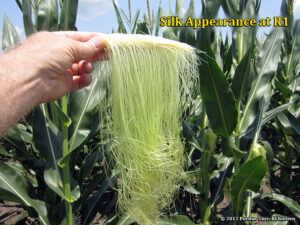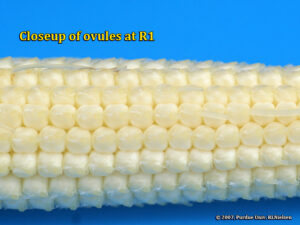 Thursday, August 26th, 2021
Thursday, August 26th, 2021Ohio cropland varies significantly in its production capabilities and, consequently, cropland values and cash rents vary widely throughout the state. Generally, western Ohio cropland values and cash rents differ from much of southern and eastern Ohio cropland values and cash rents. The primary factors affecting these values and rents are land productivity and potential crop return, and the variability of those crop returns. Soils, fertility, and drainage/irrigation capabilities are primary factors that most influence land productivity, crop return and variability of those crop returns.
Other factors impacting land values and cash rents may include field size and shape, field accessibility, market access, local market prices, field perimeter characteristics and potential for wildlife damage, buildings and grain storage, previous tillage system and crops, tolerant/resistant weed populations, USDA Program Yields, population density, and competition for the cropland in a region. Factors specific to cash rental rates may include services provided by the operator and specific conditions of the lease.
The Western Ohio Cropland Values and Cash Rents study was conducted from January through April in 2021. The opinion-based study surveyed professionals with a knowledge of Ohio’s cropland values and rental rates. Professionals surveyed were rural appraisers, agricultural lenders, professional farm managers, ag business professionals, OSU Extension educators, farmers, landowners, and Farm Service Agency personnel.
The study results are based on 94 surveys. Respondents were asked to group their estimates based on three land quality classes: average, top, and poor. Within each land-quality class, respondents were asked to estimate average corn and soybean yields for a five-year period based on typical farming practices. Survey respondents were also asked to estimate current bare cropland values and cash rents negotiated in the current or recent year for each land-quality class. Survey results are summarized below for western Ohio with regional summaries (subsets of western Ohio) for northwest Ohio and southwest Ohio.
According to the Western Ohio Cropland Values and Cash Rents Survey, cropland values in western Ohio are expected to increase in 2021 by 3.8 to 5.3 percent depending on the region and land class. Cash rents are expected to increase from 3.6 to 3.9 percent depending on the region and land class.
For the complete survey research summary go to the OSU Extension Farm Office website at:
https://farmoffice.osu.edu/farm-management-tools/farm-management-publications/cash-rents














 lication for the 2021 Ohio Wheat Performance Trials has been finalized and is attached as a PDF file. This article will be published in the mid-August issue of the Ohio Country Journal. All of these results are also available online at the wheat performance trials website:
lication for the 2021 Ohio Wheat Performance Trials has been finalized and is attached as a PDF file. This article will be published in the mid-August issue of the Ohio Country Journal. All of these results are also available online at the wheat performance trials website:  OSU Extension will host two educational field days focused on soil health and cover crops next week. Extension specialists and farmers experienced with cover crops will present on topics including inter-seeding cover crops into a growing crop, terminating cover crops, cover crop variety selection, and more. Field demonstrations cover crop plots, and equipment demonstrations will be on-site.
OSU Extension will host two educational field days focused on soil health and cover crops next week. Extension specialists and farmers experienced with cover crops will present on topics including inter-seeding cover crops into a growing crop, terminating cover crops, cover crop variety selection, and more. Field demonstrations cover crop plots, and equipment demonstrations will be on-site. Know via his Twitter handle as the @CoverCropDr, Dr. Shalamar Armstrong is an Associate Professor of Soil Conservation and Management in the Department of Agronomy at Purdue University. He holds a B.S. degree in Plant and Soil Science from Southern University, an M.S. in Soil Fertility from Alabama A&M University, and a Ph.D. in Agronomy from Purdue University.
Know via his Twitter handle as the @CoverCropDr, Dr. Shalamar Armstrong is an Associate Professor of Soil Conservation and Management in the Department of Agronomy at Purdue University. He holds a B.S. degree in Plant and Soil Science from Southern University, an M.S. in Soil Fertility from Alabama A&M University, and a Ph.D. in Agronomy from Purdue University.
 Potato leafhopper (PLH) adults arrived in Ohio during the last week of June and the first week of July. Since then, the eggs have hatched and we are now seeing late-stage nymphs and adults infesting alfalfa fields. A few fields are showing the typical “hopper burn”, which is a triangular yellowing from the center of the leaf to the leaf margin. The more mature the crop of alfalfa is since the last cutting, the more the hopper burn symptoms will be showing. Hopper burn will also become more pronounced in areas of the state that are short on rain or are predicted to become drier because the alfalfa will not be able to outgrow the feeding activity of PLH. Scouting now and making appropriate management decisions based on the scouting can help avoid serious damage to the crop.
Potato leafhopper (PLH) adults arrived in Ohio during the last week of June and the first week of July. Since then, the eggs have hatched and we are now seeing late-stage nymphs and adults infesting alfalfa fields. A few fields are showing the typical “hopper burn”, which is a triangular yellowing from the center of the leaf to the leaf margin. The more mature the crop of alfalfa is since the last cutting, the more the hopper burn symptoms will be showing. Hopper burn will also become more pronounced in areas of the state that are short on rain or are predicted to become drier because the alfalfa will not be able to outgrow the feeding activity of PLH. Scouting now and making appropriate management decisions based on the scouting can help avoid serious damage to the crop.